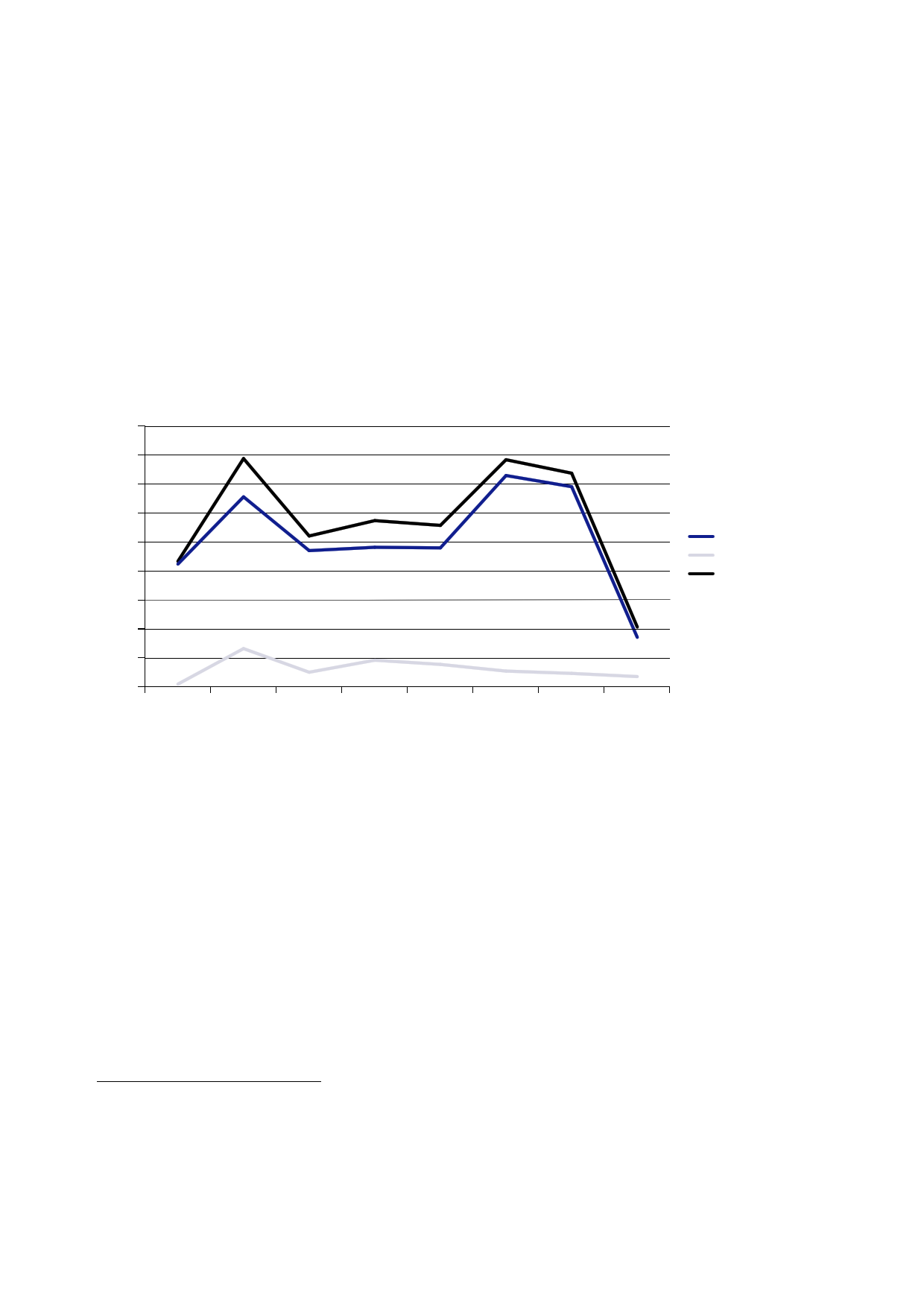
The Report
of the Iraq Inquiry
4.
In addition,
the UK provided £0.95bn in debt relief to Iraq.
5.
The figures
above do not include expenditure by departments other than the
MOD,
the FCO and
DFID. Although other departments made important contributions to
the UK
effort, in
particular in the post‑conflict period, their expenditure was
relatively small. The
Inquiry has
made no estimate of the opportunity cost of the UK’s involvement in
Iraq.
6.
The chart
below shows the direct cost of military operations and civilian
activities by
financial
year. A more detailed breakdown of direct costs is provided at the
end of this
Section.
1,800
1,600
1,400
1,200
1,000
800
600
400
200
0
2002/03
2003/04
2004/05 2005/06 2006/07 2007/08
2008/09
2009/10
Military
operations
Civilian
activities
Total direct
cost
7.
The Inquiry
asked Sir Nicholas Macpherson, Director General in charge of
Public
Expenditure
from 2001 to 2005 and then Permanent Secretary at the Treasury,
about
additional,
or indirect, costs such as continuing disability and medical costs
for veterans.5
Sir Nicholas
confirmed that such costs were not captured in the information
provided to
the Inquiry
by the Government.
8.
In October
2002, the Treasury estimated that the indirect cost of a conflict
could more
than double
the direct cost.6
9.
Several
estimates have been made of the total (direct and indirect) cost of
the Iraq
War. In
their 2007 book, The Three
Trillion Dollar War, Professor
Joseph Stiglitz and
Ms Linda
Bilmes estimated that the total cost of US involvement in Iraq
could be double
the direct
cost to the US Government.7
The total
cost included: veterans’ future costs
5
Public
hearing, 22 January 2010, pages 6‑7.
6
Minute
Cunliffe to Chancellor, 22 October 2002, ‘Iraqi War: Risks to
Treasury Objectives’ attaching Paper
Treasury,
[undated], ‘Impact of a War on Treasury Business’.
7
Stiglitz J
and Bilmes L, The Three
Trillion Dollar War, Allen
Lane, 2008. The Inquiry is not able to
comment on
the methodology used by Professor Stiglitz and
Ms Bilmes.
446
